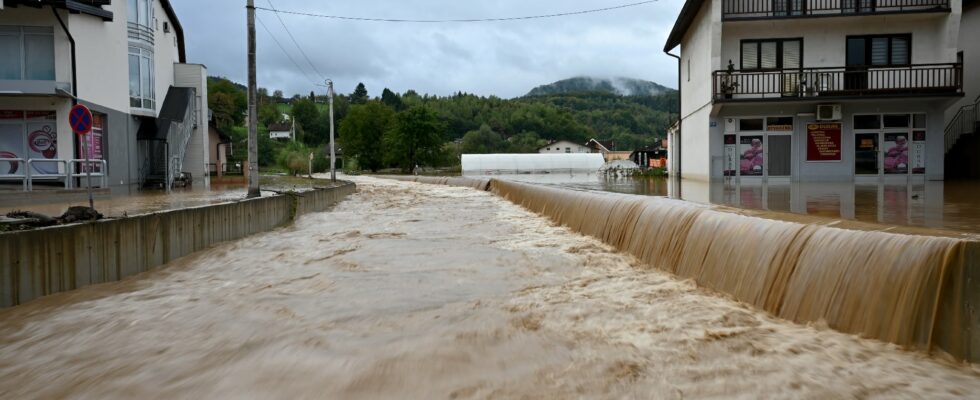Floods, droughts, water shortages…”the warning signals are increasing”, warns Celeste Saulo, secretary general of the World Meteorological Organization (WMO), a UN agency, in a press release published Monday October 7, and “yet we are not taking the urgent measures that are required.” According to the new WMO report on the global state of water resources, the year 2023 was marked by prolonged droughts and widespread flooding, “due to both the transition from La Niña to El Niño (natural climatic factors) and climate change induced by man.
Data collected in forty countries around the world show that rivers have reached an unprecedented level of drought for thirty-three years, announcing “worrying disruptions in water resources, while demand continues to increase. “
An irregular and unpredictable water cycle
Until recently in Bosnia-Herzegovina, Thailand, Nepal and Mexico, the end of September and the beginning of October were punctuated by deadly floods. Extreme phenomena, likely to increase due to climate change, and which can be explained in part, according to the World Meteorological Organization, by an irregularity in the water cycle.
“The rise in temperature has accelerated the hydrological cycle, which has also become more irregular and less predictable,” explains Celeste Saulo. “As a warmer atmosphere can hold more moisture, global warming increases the risk of heavy precipitation. At the same time, accelerated evaporation and drying of soils worsen droughts.” Result: “We are faced with increasingly difficult situations, where water is either too abundant or insufficient,” warns the general secretary.
Total precipitation in 2023 was above normal in several regions, including eastern and central Asia, parts of northern Asia, western India, and parts of Africa, Europe and North America. Conversely, significant rainfall deficits were observed in the southeast of South America, in the Amazon basin, in a large part of Central America, in the south of Canada, in the Mediterranean region Western and parts of Africa and Asia.
America’s rivers essentially experienced “below or much below normal conditions”, points out the WMO in its report. All countries in the Amazon basin experienced record levels of low precipitation.
Finally, preliminary data for the period September 2022-August 2023 show a significant loss of glacier mass “which would be the largest ever recorded (1950-2023)”, according to the agency. The WMO, which underlines “the urgency of action”, recalls that 3.6 billion people are currently facing water shortages, and that this is expected to exceed 5 billion by 2050.
